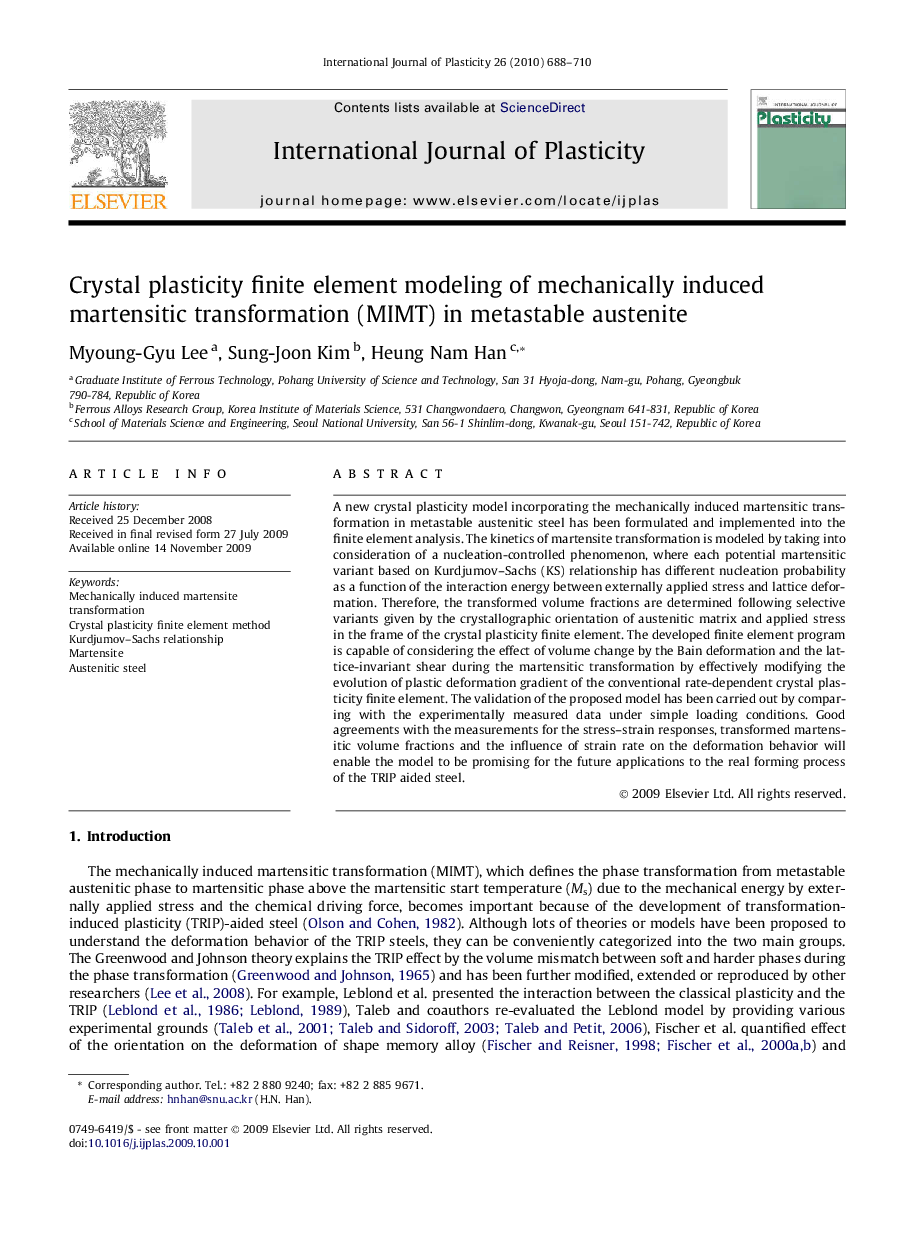| Article ID | Journal | Published Year | Pages | File Type |
|---|---|---|---|---|
| 784566 | International Journal of Plasticity | 2010 | 23 Pages |
A new crystal plasticity model incorporating the mechanically induced martensitic transformation in metastable austenitic steel has been formulated and implemented into the finite element analysis. The kinetics of martensite transformation is modeled by taking into consideration of a nucleation-controlled phenomenon, where each potential martensitic variant based on Kurdjumov–Sachs (KS) relationship has different nucleation probability as a function of the interaction energy between externally applied stress and lattice deformation. Therefore, the transformed volume fractions are determined following selective variants given by the crystallographic orientation of austenitic matrix and applied stress in the frame of the crystal plasticity finite element. The developed finite element program is capable of considering the effect of volume change by the Bain deformation and the lattice-invariant shear during the martensitic transformation by effectively modifying the evolution of plastic deformation gradient of the conventional rate-dependent crystal plasticity finite element. The validation of the proposed model has been carried out by comparing with the experimentally measured data under simple loading conditions. Good agreements with the measurements for the stress–strain responses, transformed martensitic volume fractions and the influence of strain rate on the deformation behavior will enable the model to be promising for the future applications to the real forming process of the TRIP aided steel.
